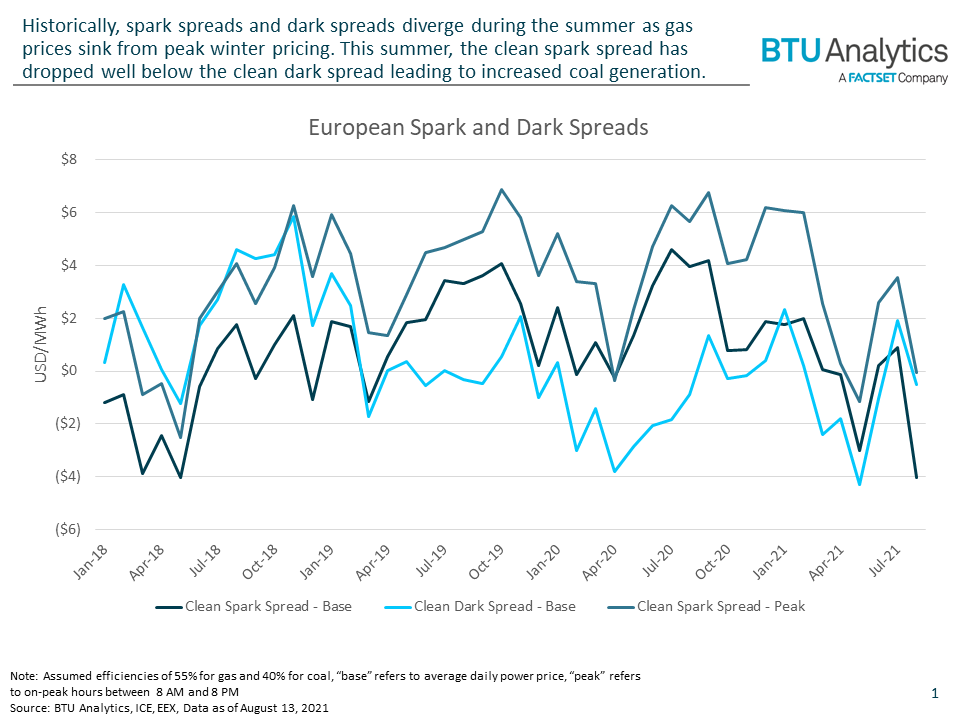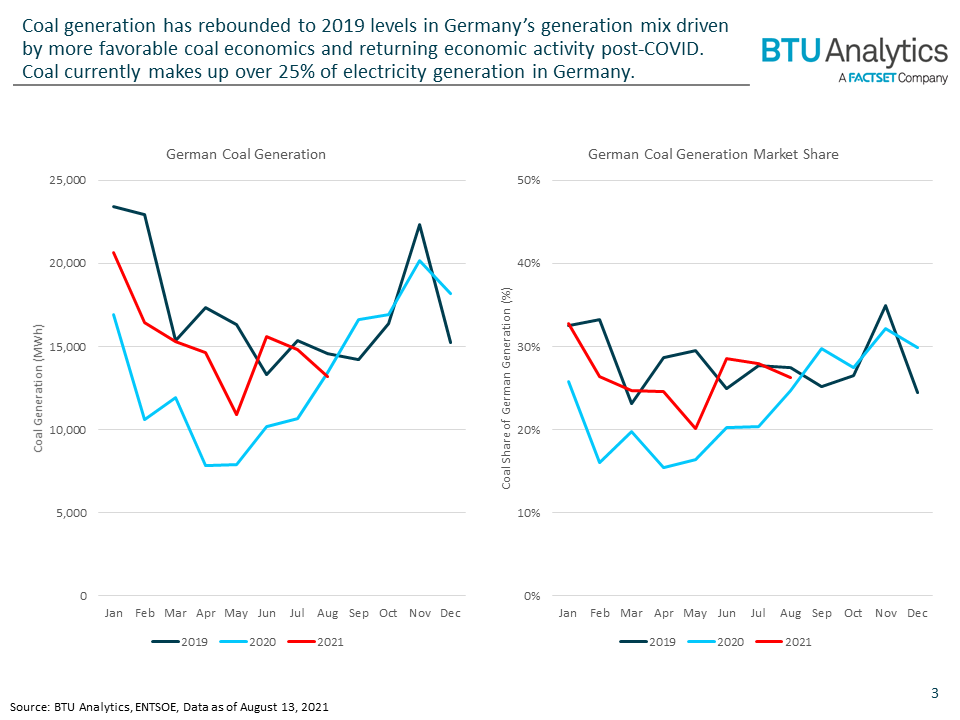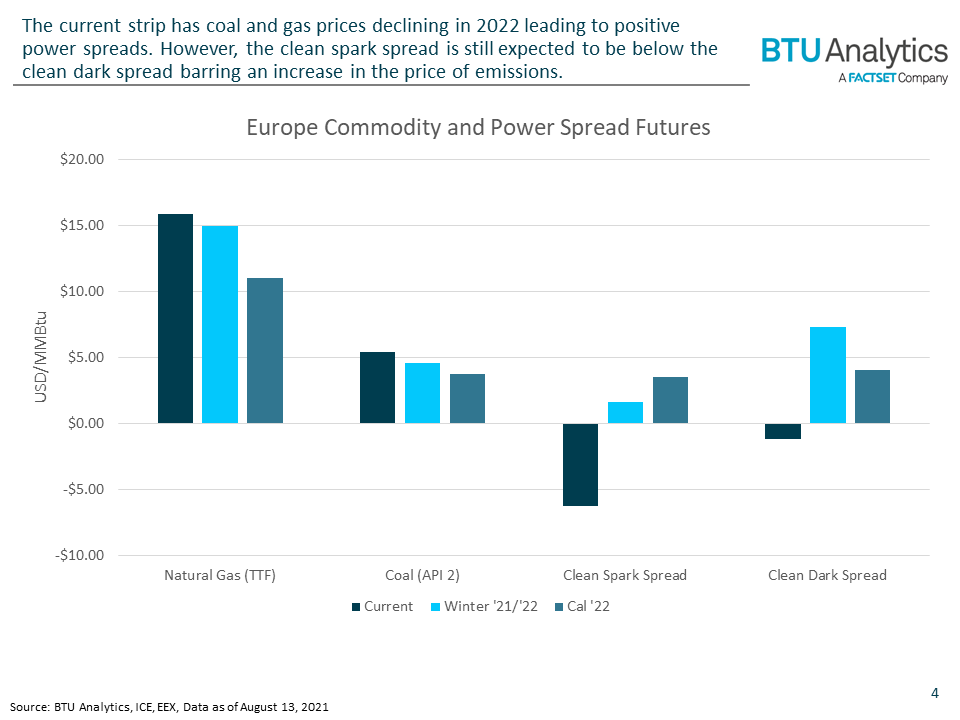Europe is in a bit of a bind. On one hand, the European Union wants to lead the way on renewable energy and climate change mitigation. On the other, Europe wants to keep the lights on. After a cold winter, European gas storage stocks have struggled to recover potentially leaving Europe extremely short gas as winter approaches. As a result, natural gas prices in Europe have risen sharply. High natural gas prices have allowed other forms of energy, namely coal, to become more economic this summer. The rise in economic coal generation has been reflected in the steep decline in the clean spark spread and the increase in coal-fired generation in Germany. Today’s Energy Market Insight will review pricing dynamics in Europe and the potential implications for US LNG Exports.
One method of evaluating the economic viability of a fuel source is through spark and dark spreads (for gas and coal, respectively). Each spread represents the theoretical generation margin by subtracting the cost to acquire each fuel from the price of electricity. However, Europe has the additional cost of emissions which are covered by purchasing allowances through the Emissions Trading System. At nearly $65/metric ton, this has a substantial impact on the economics of generation. Factoring in the cost of emissions results in a “clean” spread, that is, the profit margin after accounting for the environmental cost.

The surge in gas prices in Europe has crushed the clean spark spread this summer. At average daily power prices (base), the clean spark spread is averaging $1.67/MMBtu less than the clean dark spread since the beginning of July. Even at peak daily power prices, the clean spark spread is now at parity with the clean dark spread. This indicates that the variable cost of coal generation is more economic than gas generation for most observed gas prices.

The relative rise in economic coal generation is evidenced by increased electric generation in Germany, Europe’s largest coal consumer. German coal generation has rebounded above 2019 levels in June and July, coinciding with the increase in TTF pricing. Not only is coal generation now averaging over 0.4 GWh/d for the summer, the share of Germany’s total electric generation has now climbed back up over 25% after falling below 20% in 2020. Some of this can be attributed to the rebound in economic activity post-COVID, but sustained pricing at current levels could force Germany’s continued reliance on coal.

Indeed, at current strip pricing, coal should continue to be economic through 2022. While TTF pricing is expected to come down from current highs above $15/MMBtu, low European gas storage inventories will continue to support gas prices. The 2022 strip is still averaging over $11/MMBtu, and, with coal prices also expected to fall, the clean dark spread is currently projected to average $0.60/MMBtu less than the clean spark spread for the balance of 2022. In order to encourage more natural gas, burn next year, emissions pricing will need to rise to make coal less economic compared to natural gas.

As part of the Europe Fit for 55 package, the European Union has proposed further reducing the emissions cap under the cap and trade system. While that will have a positive impact on reducing emissions by disincentivizing coal generation, it would place even more pressure on the European gas market. Given the already bullish outlook for natural gas prices in Europe, US LNG exports should continue to receive price support through 2022 and beyond. You can find BTU Analytics’ LNG forecast and drivers in our monthly Henry Hub Outlook.








